Traveling to different parts of Iran shows you a variety of cultures and traditions which are unique and mesmerizing. This land of color gathered different groups of people to illustrate the concept of unity in diversity in the best way possible.
By having a journey to Persian customs and traditions, you get to sense the beauty of this ancient country.
Table of Contents
Nowruz
Nowruz is a traditional celebration, this word comes from Avesta, which is literally translated to “new day.” Iranian people enjoy celebrating a new beginning, and Nowruz is one of them. This is a festival to celebrate the beginning of spring, which happens at 20 or 21 of March, and it is the first day of the Persian calendar. Nowruz has a Zoroastrian origin, and people have been celebrating it for more than 3000 years. The moment that the sun passes above the equator, the celebration begins. At this point, night and day have the same lengths.
People get prepared for Nowruz from months before. They buy new clothes as a symbol of a new beginning. They clean their house which is called “Khaneh Tekani” which literally means “shaking the house” because cleaning the house before Nowruz is a very drastic job. During Khaneh Tekani, every inch of the home must be cleaned. People clean all of their furniture and throw away the ones that they do not want to use anymore.
On the first day of Nowruz, Iranian families like to eat Sabzi Polo Mahi, which is cooked rice and herbs such as dill with fried or barbecued fish.
Celebrating Nowruz without spending time with your loved ones and visiting your relatives is meaningless, so people go to their relatives’ houses, mostly elders, and celebrate it together.
The whole country looks different when it comes to Nowruz. You can see people’s excitement and the special decorations in the streets and is the perfect time to visit Iran.
Also, people set a table which is the center of the celebration.
What is the Haft Seen Table?
During Nowruz, Iranians set a table which is called Haft-Seen, which means “Seven S.” Seven is a lucky number in Persian culture. Iranian people put seven symbolic items on this table which starts with the letter S.
1. Sabzeh: It is wheat or lentil sprout which must be grown in a dish and represents rebirth.
2. Samanoo: It is a sweet, creamy pudding that symbolizes strength and blessing in life.
3. Seeb: Apple represents health and beauty.
4. Senjed or Silver Berry is a sweet and dried fruit. It is a symbol of love.
5. Seer: It is garlic and represents medicine or health.
6. Somaq: It is a Persian spice that represents sunlight.
7. Serkeh: Vinegar symbolizes age and patience.
Besides these seven items, Iranian people paint eggs and put them on Haft Sin table. These eggs show fertility.
Haft-seen table is not the only ritual during Nowruz. Many years ago, Iranians used to notice the coming of Nowruz by seeing Haji Firooz in the streets.
Who Is Haji Firooz?
Haji Firooz is the courier of spring who is a folkloric character like Santa. He wears red customs, and In Nowruz, he dances, plays music, sings folkloric sings and spreads joy among Iranians. His face is covered with soot and has a tambourine in his hand. There are several different stories about the meaning of this character, but one of the most reliable ones is told by Dr. Mazdapour, who is a Persian historian.
He believed that in Persian mythology, one day Anahita, the goddess of Fertility decided to go to the underworld. The queen of the underworld was jealous of her and took all her jewelry. Without the jewelry, the ground was not fertile anymore and winter came. Since people had nothing to eat during this time, soon they began to complain about their problems to the kind. To make people happy and rescue his wife the king traveled to the underworld and saved Anahita. His face was black, showing that he is back from the underground world. Wearing a red dress and having a tambourine in his hand he displays his happiness by playing music because he was able to make the earth fertilize again and that is how spring comes.
Every year, Haji Firooz shows people that the hard time is finally over and they should start a happy year.
Sizdah Bedar
Sizdah Bedar is the thirteenth day of Nowruz in which people go outside of their homes to spend their time in nature and have a picnic with their loved ones. The name Sizdah Bedar means getting rid of thirteen. The story behind this day goes back to hundreds of years ago when Iranians considered the number 13 bad luck. They believed that by being in nature which is created by Ahura Mazda or God, this bad luck goes away.
To make the most of this day, Iranians play games and eat special foods such as Kahoo Sekanjebin which is lettuce with a Persian syrup made of vinegar, sugar, and mint.
An essential ritual for this day is knotting greens. Usually, the young unmarried people knot the green to find their soulmate. Then, they throw the wheat into the water.
Chaharshanbe Suri
There are many other traditions attached to Nowruz, and Chaharshanbe Suri is one of the most important ones, but what is Chaharshanbe Suri?
The fire has always been an important element in Persian culture which is rooted in Zoroastrianism. In Persian culture, people celebrate the last Wednesday of the year by making bonfires and jumping over them and singing a song which translates to “Your redness to me, my paleness to you.”. People used to light a big fire in their houses. Since the fire was sacred and its brightness was a symbol of God, it was considered bad luck to extinguish it. By jumping over the fire and singing that song, people ask the fire to give them from its own health and make sickness disappear. It is sort of a purification chant.
Although all the people jump over fire, based on people’s culture and where they live, they have different customs as well. Something like trick or treat, called Ghashogh Zani is common in some parts of Iran during Chaharshanbe Souri. Different Cities have special dishes for Chaharshanbe Souri as well. One of the most common ones is “Ash,” which is a type of soup made of Peas, beans, lentils, and some herbs such as parsley, spinach, coriander, and dill. In order to make Ash-e Reshteh which is the most popular type of Ash, people add Persian noodles called Reshteh and whey sauce called Kashk to this combination.
Yalda
On the last night of the ninth month in the Persian calendar, Iranian people celebrate the most prolonged and darkest night of the year, which is the winter solstice. They have gatherings in elderlies’ houses to show the significance of family bonds.
In ancient Persian culture, people believed that celebrating this night makes light and good prevail over darkness. Iranians prepare for the occasion by making Yalda night special.
They do shopping which includes buying dried fruits, and nuts. Also, they purchase winter fruits like pomegranates which is the symbol of rebirth and watermelon to hope for a fruitful spring and summer and stay healthy during the year.
Poetry has an important role in Persian culture. On this particular night, people read Hafez, and sometimes they do fortune-telling by using his poems. The one who has wishes or questions in his or her mind must open the book. By reading the poem in that random page and understanding the meaning of it, the decision can be made.
After spending the whole night with family, people believe that at the end of the night, lightness will eventually overcome darkness.
Religious Traditions
Islam is the official religion in Iran; hence its rituals and traditions are combined with Iranian culture. During special dates such as the birth and the death of Islamic infallibles, Muslims of Iran hold ceremonies.
They show their respect for the infallible by preparing a spread full of food and inviting people to join. Based on the event, they sing special music as well. The happy Islamic music is called Moloudi, and the sad one is called Nohe or lament.
Muharram
Muharram is an Islamic tradition that is combined with Iranian culture. In the Quran which is the holy book of Islam, four months are sacred and Muharram is one of them, but why? The word Muharram means sacred. This month is a reminder of Imam Hussein and his heroic actions. Who is Imam Hussein?
He was the grandson of the prophet of Islam, Muhammad and the third Shia Imam. Yazid who was the ruler of the Umayyad caliphate asked Imam Hossein to pledge allegiance to him, but Hossein refused because Yazid was not a rightful leader, so Yazid plotted to assassinate him. Imam Hussein and his family left Madinah to go to Kufa, Yazid and his army surrounded Imam Hossein for days and did not let them even drink water and eventually martyred Imam Hussein and his family in the battle of Karbala.
To keep in mind what Imam Hossein did, Shia people in Iran have a ritual mostly in the first 10 days of Muharram. People go to the street wearing black as a symbol of mourning. Also, they commemorate this ritual by music and a unique play called “Taziyeh”. In this form of play, people show the battle of Karbala and the suffering that Imam Hussain went through.
In order to show kindness to mankind, people distribute food among everyone. This food is usually Khoresht-e Gheymeh (beef and split peas stew). During Muharram, Muslims try to show the value of standing against injustice as well.
Ramadan
Speaking of Islamic rituals, Ramadan is another one of them. In this sacred month, Muslims from all around the world and mostly Iran, practice devotion and spiritual purification with abstaining from food, drinks, and other physical needs during the daylight hours.
It is the month of fasting and celebration for Muslims; however, in order to pay respect to those who are fasting, other people are not allowed to eat or drink in public between sunrise to sunset. In Ramadan, Iranian people have some special foods such as Halim which is a stew, and a sweet and delicious dessert called Zoolbia & Bamieh.
Since Zoroastrianism is an ancient Persian religion and a big group of Iranians are still Zoroastrians, it is good to look at their important rituals.
Zoroastrians used any opportunity for celebration. They held gatherings with music and unique traditions to celebrate each month of the Persian calendar. One of their most important ceremonies is called Tirgan.
What is Tirgan?
Zoroastrians believe that by celebrating the thirteenth day of Tir which is the first month of summer, they can pray for a fertile year without suffering from drought. They pray to the Tishtrya who is the divinity of rainfall and fertility.
By throwing water on each other, dancing and playing music people celebrate this day. After eating sweets, Iranians wear a bracelet made of seven colors and release it in the wind after nine days, they also make a wish, hoping to come true.
Also, they commemorate this day because they believe in Tirgan day, Arash the archer, fired his arrow and set the border between Iran and Touran.
In Persian mythology, we read about the conflict between Iran and Touran, which was a mythological land. After a lot of tensions, they decide that an Iranian archer must fire an arrow and the spot in which the arrow stops would be the border. This quest sounds impossible, but Arash shot his arrow very far by putting all his life on it.
Taarof
One of the most interesting parts of Persian culture is Taarof which can create an awkward situation if you are not aware of that. It is the Iranian way of social etiquette. In Iran putting others ahead of you in different situations is a sign of respect. Taarof Phenomena is an exaggerated kindness that comes out of politeness to show how much Iranians value their guests. Although understanding it genuinely is challenging, you can get a sense of it through examples.
When you want to enter a room or leave, it is polite to ask others to go first. They will insist on going after you, but you should kindly ask them a couple of times and then pass the door.
Or when you want to buy something in a store, and you are giving the money to the cashiers, they are going to say “Ghabel Nadareh” which means the product is valueless and they will not accept the money, but they are being polite, so you should insist hard and give the money to them. This process of Taarof can take time, but it shows that you are nice to people.
The general rule is that you should refuse something which has been offered to you at least once if the ones who made the offer are interested, they will ask again, then you will understand it is not just a Taarof and can be counted on it. However, you can understand the difficulty of the offer and make a decision based on it.
Also, it is not polite to make it easy and ask Iranians if what they say is Taarof, or they mean it. You will hear that they mean it even though they may not.
Remember that, Iranians are very hospitable and they truly want to help their guests however they can. It is nice to be open to their hospitality and accept their generosity.
Throwing Water Behind Travelers
Throwing water behind travelers is a lovely tradition among Iranians. In Persian families, when someone is leaving home for a long trip, other family members fill a cup with water and some flowers and pour it behind the traveler. Water is a symbol of purity and brightness, so by throwing the water, they want a safe trip for the travelers and wish they return soon.
Coffee Drinking Ceremony in Khuzestan
The land of tall palm trees and gorgeous Karoun river, Khuzestan has a big Arab ethnic group that comes with their warmest hospitality and amazing traditions.
Instead of serving black tea for their guests, Arab people use exceptional Arabic coffee.
This ceremony means a lot to Arabs, and they have traditions for drinking coffee which their guests should follow. This tradition is most common among men, and they make this coffee from scratch by heating and grinding the coffee beans.
The host offers a cup of coffee with their right hand to the guests, and they should drink it without putting the cup down unless they have a request. There is usually no conversation about coffee between the host and guests. They should show their appreciation by their body language. If guests want a refill, they should give the cup to the host, and if they had enough coffee, they should shake the cup to the right and left.
Usually, four round of coffee is being served. The host drinks the first cup of coffee to show it is safe to drink. The second and third one will be drunk by the guests, and a few people ask for the fourth cup because it creates a close friendship between the guest and the host. After drinking the fourth cup, the guests must say that they would do anything they can for the host in his sickness and health.
Throwing Coins
There is a pool full of golden fish in Saadi’s tomb in Shiraz. People of Shiraz always believed that this water which comes out of an aqueduct is scared. By standing backward while whispering some of Saadi’s poems people can throw a coin in the pool and make a wish. If the coin drops inside the water, their wish will come true.
Also, they believe that young unmarried people can wash their hands with this water to find their soulmate.
Rice Harvesting Ceremony in Gilan
Rice harvesting ceremony or Jokol, is held annually in August. Gilan is a northern province of Iran which has fertile green lands. To be thankful for being blessed with great rice, they harvest some of the raw rice called Jokol which has a sweeter taste and heat it to be crunchy. Then locals peel it using rice husker and eat it as a snack with honey or nuts. People of Gilan still hold this ceremony and give some of the heated Jokol to the tourists visiting there.

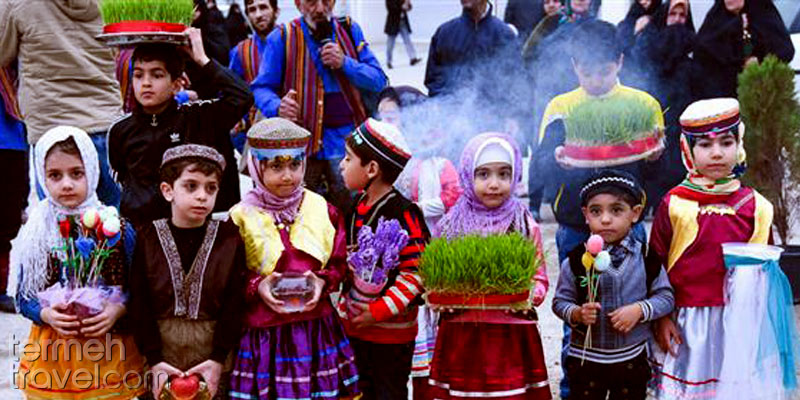



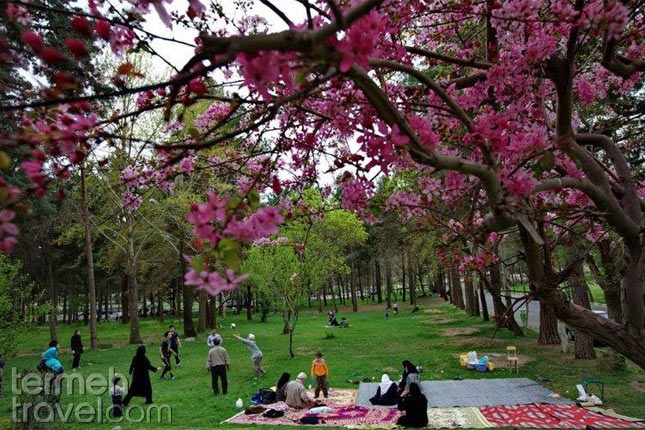

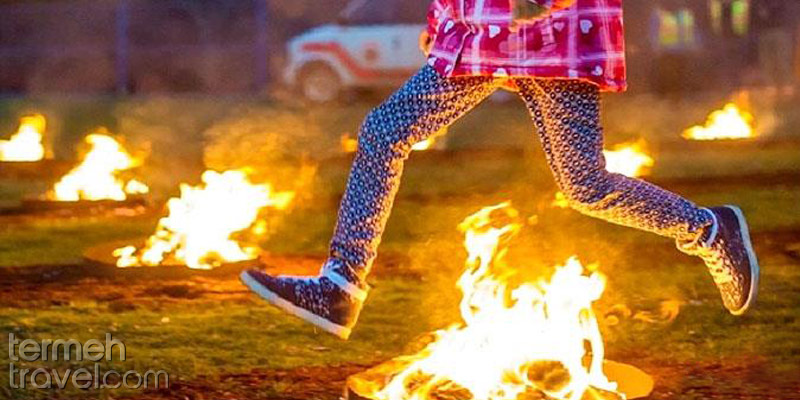
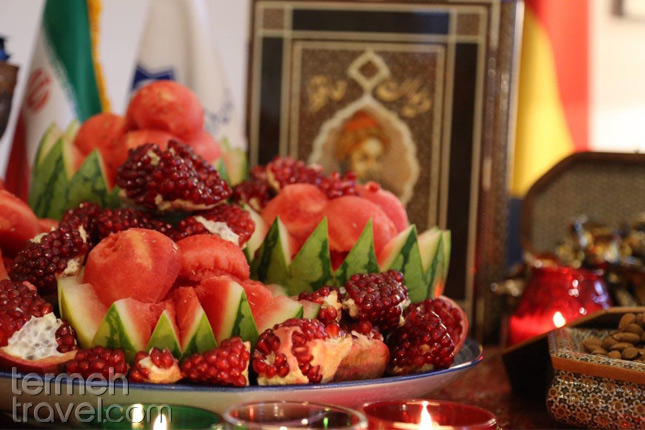










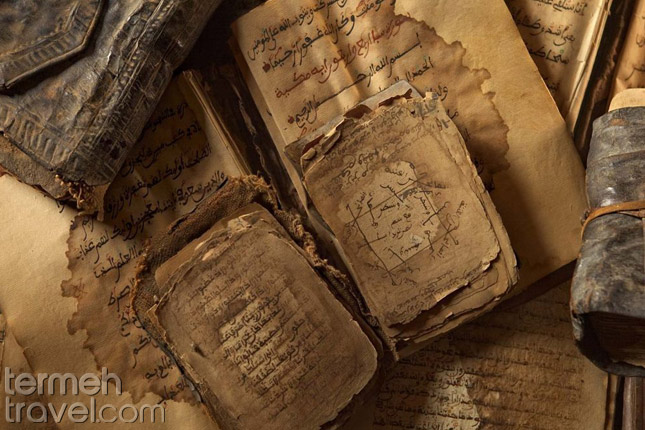
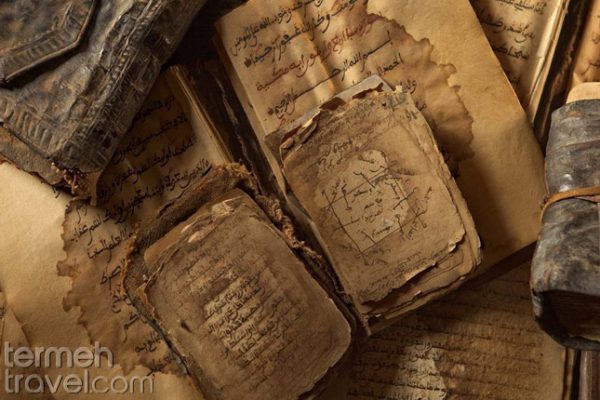
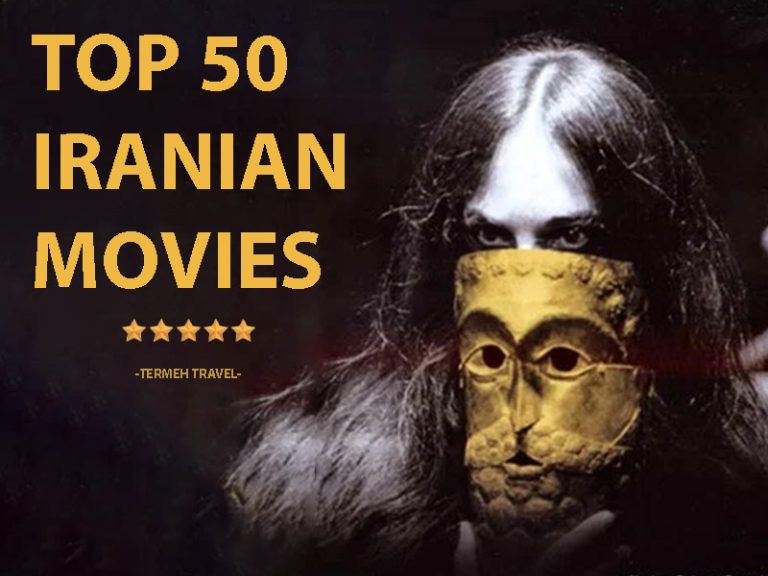
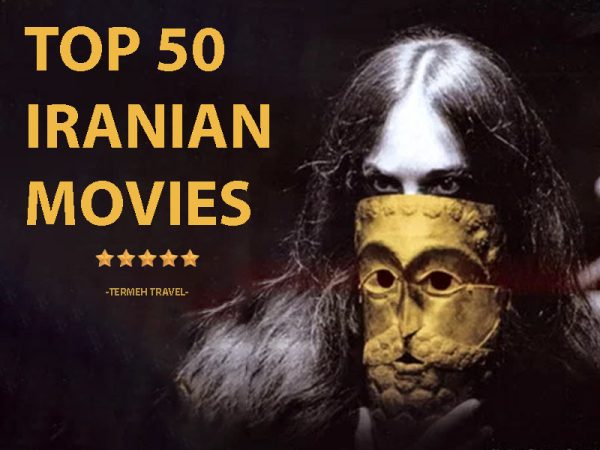
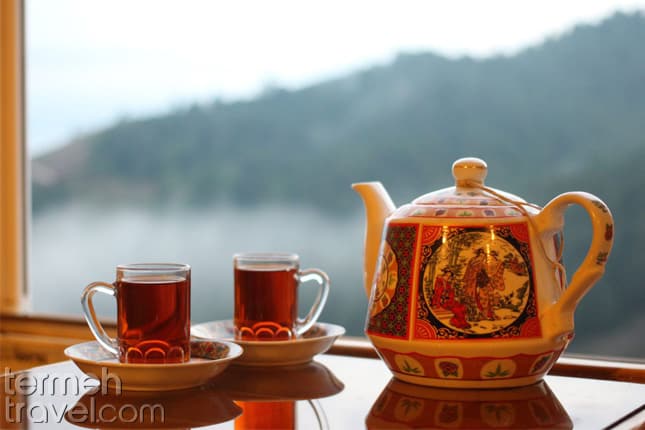
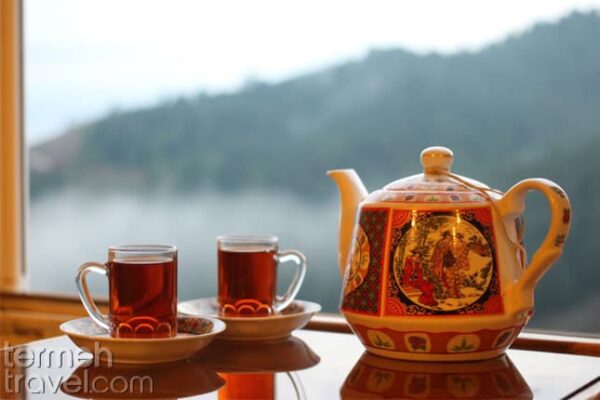
i love the food mine nowq gimmie
Hi, could you please tell me what does one give a friend as housewarming present in Iran?
Thank you 🙏